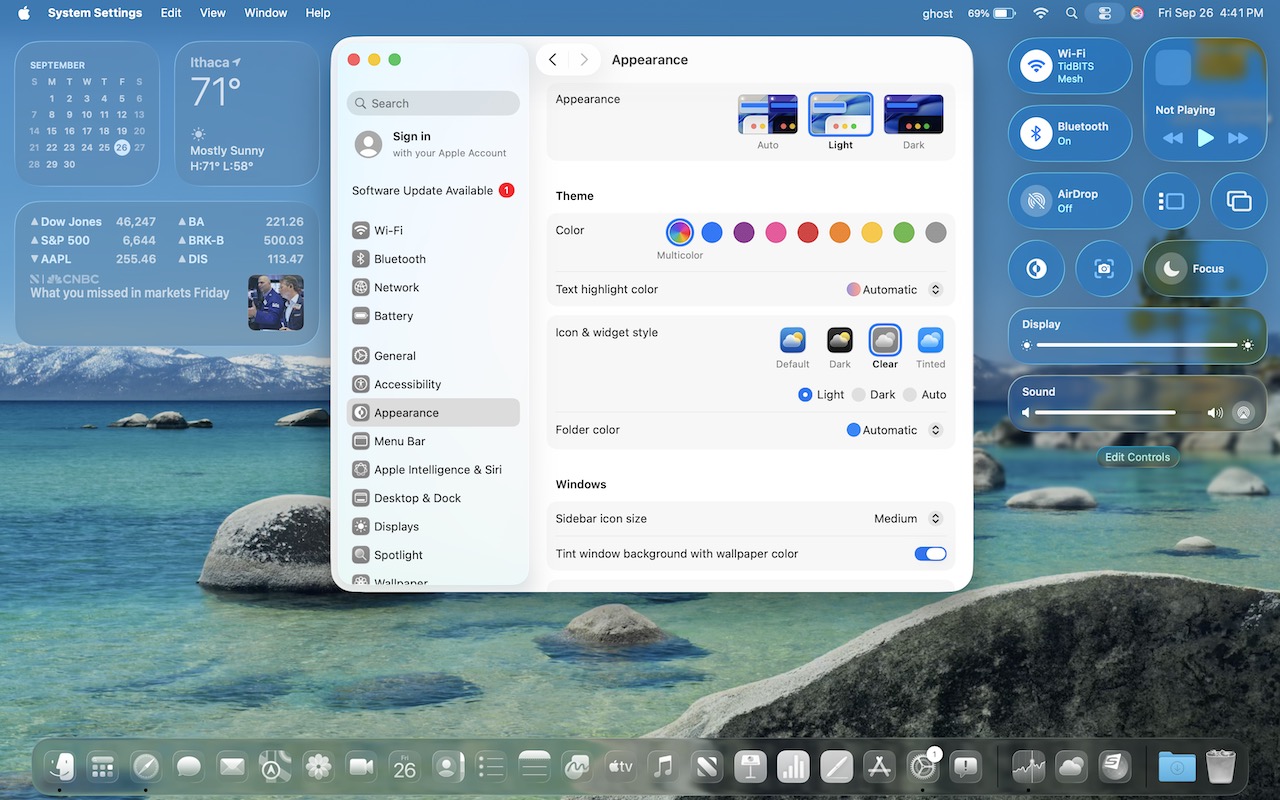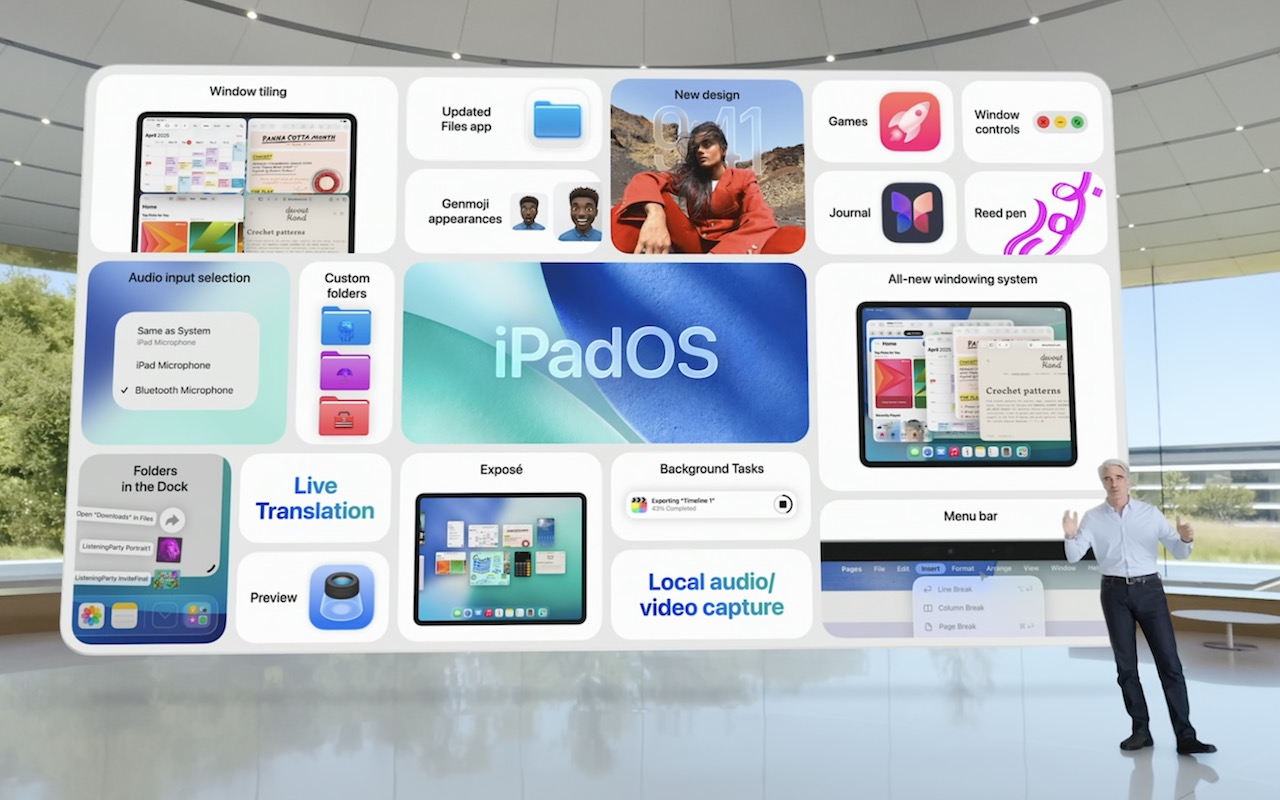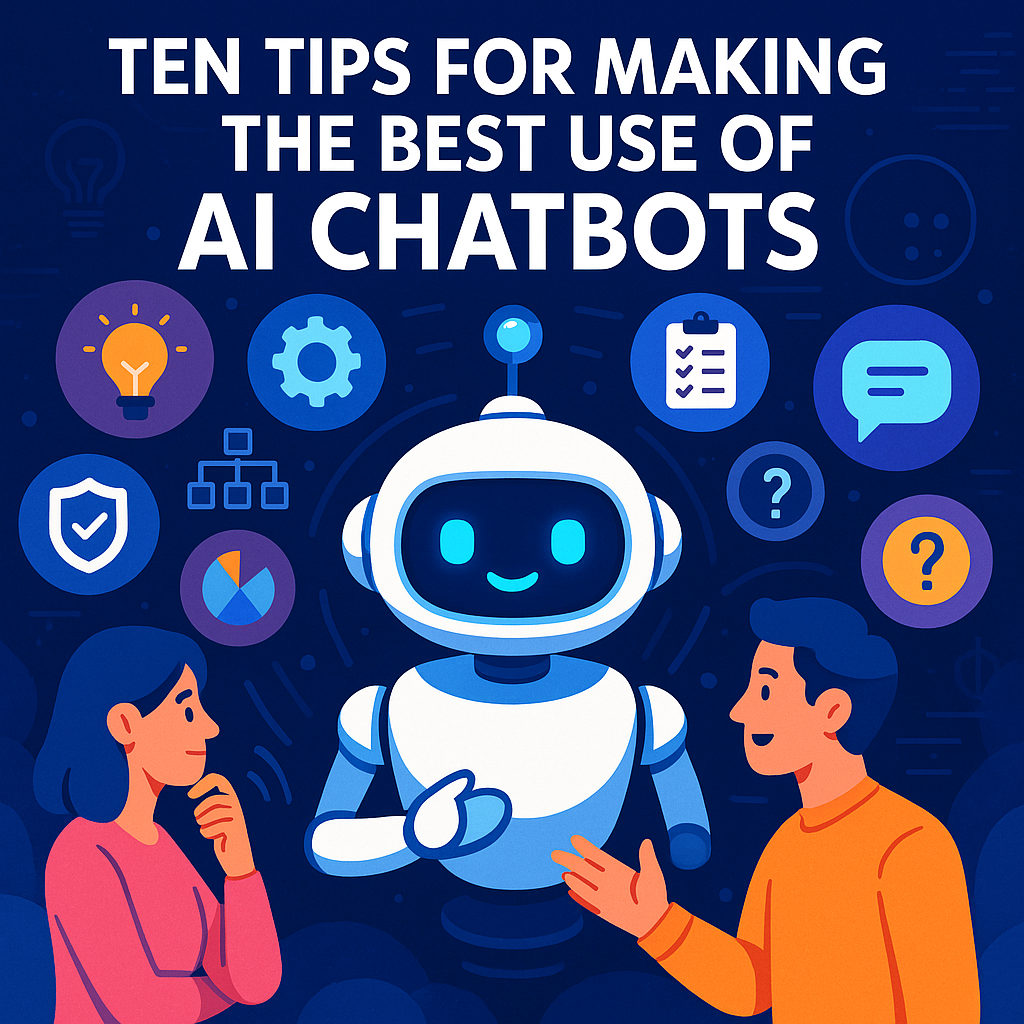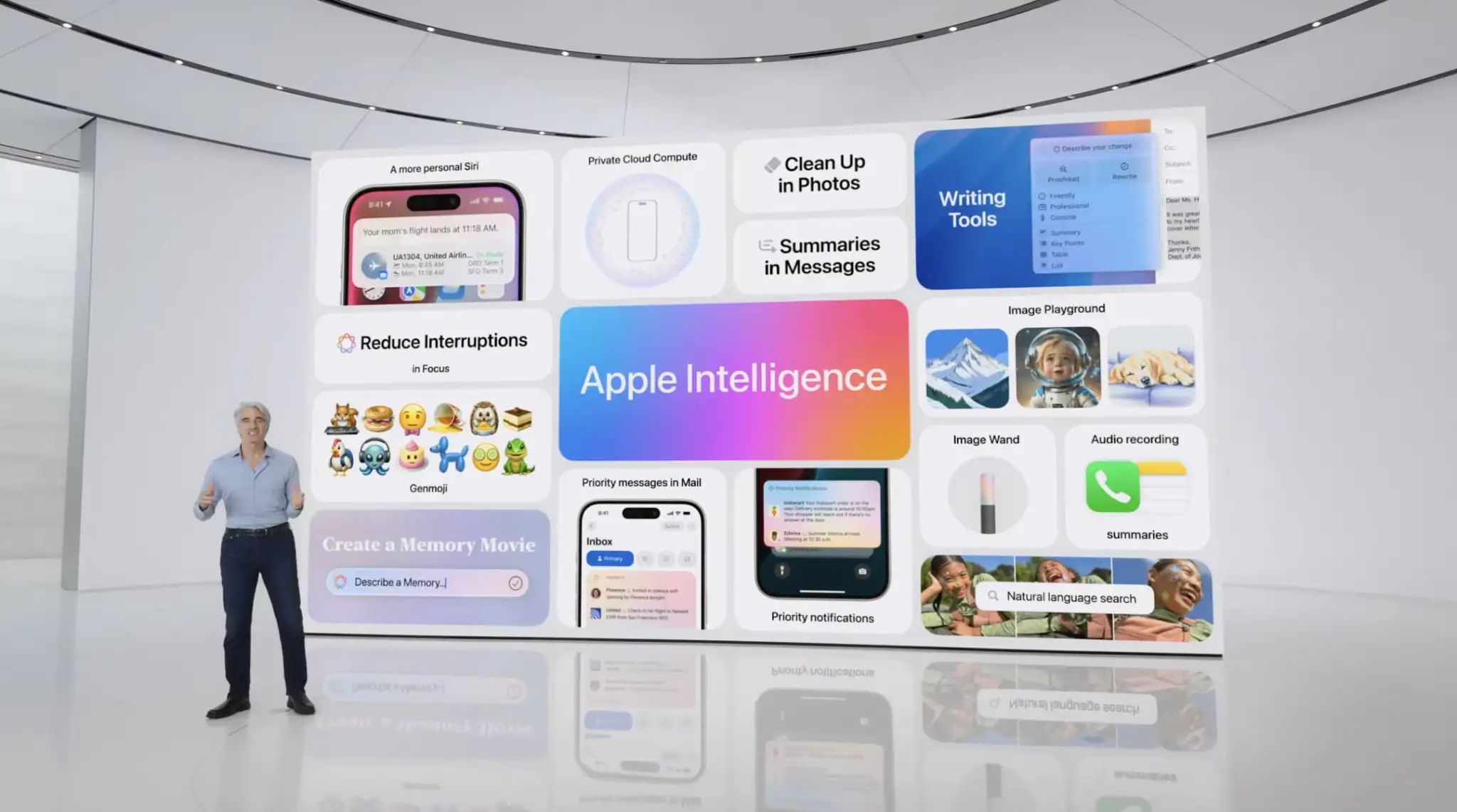macOS 26 Got a Makeover—Here’s What You’ll Actually Notice
From transparent menu bars to customized folders, macOS 26 Tahoe introduces the most significant visual update in years. Discover the key interface changes that will influence your daily Mac use… and which you can turn off.
Watch What You Say in AI-Recorded Meetings
<div class="media_block"><img src="https://www.creativetechs.com/wp-content/uploads/2025/09/watch-what-you-say-in-ai-recorded-meetings.jpg"></div><p>You’re in a meeting with colleagues, and after everyone else has trickled out, you talk about a sensitive topic with a trusted friend. That would typically be no problem with an in-person meeting, but with a modern virtual meeting, where an AI records a transcript, summarizes what was said, and automatically emails it to all participants, you might not want everyone to know about your coworker conflicts, job search, health issues, relationship troubles, or countless other confidential matters.</p>
<p>This issue affects all major videoconferencing platforms—Zoom, Microsoft Teams, Google Meet, and others. Many organizations also use standalone AI recording tools that can join meetings as participants, such as<a href="http://otter.ai" target="_blank" rel="noopener"> Otter.ai</a>,<a href="https://fireflies.ai/" target="_blank" rel="noopener"> Fireflies.ai</a>, and<a href="https://tldv.io/" target="_blank" rel="noopener"> tl;dv</a>.</p>
<p>No one should feel ashamed of using AI-generated meeting summaries, nor should these tools be categorically avoided. They’re undeniably helpful, allowing people to focus on the discussion instead of taking notes or worrying about forgetting action items. We know people who consider them life-changing.</p>
<p>However, the fact remains: unlike a person tasked with taking notes, these tools record everything, including pre-meeting chatter, small talk, and personal asides that a person would know not to include. Making matters worse, AI notetakers are often configured to distribute transcripts and summaries automatically to all attendees—including those who were invited but didn’t attend. While this helps people catch up on missed meetings, it can cause problems if the absent individuals were themselves the topics of discussion. And we won’t even get into the potential legal and HR implications of certain conversations being made public.</p>
<h3>Practical Solutions</h3>
<p>Given the utility of AI-generated meeting summaries, what can you do to reduce the chances of potentially embarrassing or problematic conversations being shared inappropriately?</p>
<ul>
<li><b>Warn attendees:</b> Although most videoconferencing tools alert users that recording is happening, everyone is used to these notifications. For a more explicit warning, the meeting host can remind everyone that summaries will be shared with all attendees.</li>
<li><b>Pause/resume recording:</b> While not all videoconferencing and AI recording tools offer the option to pause and resume, it can be useful. The meeting host can wait to start recording until everyone has arrived and the pre-meeting chatter has died down, and then stop it once the last agenda item has been discussed. The challenge is that this requires the host to remember to start and stop at the right times, and any valuable conversation before or after these points will be lost.</li>
<li><b>Restrict distribution:</b> Another option is to configure the system so meeting summaries are sent only to the host, who can then review and edit them if needed before sharing with the rest of the attendees. The drawbacks here are the extra work for the host and the delay in participants receiving the notes, which can hold them back from starting on action items.</li>
<li><b>Watch what you say:</b> Just as with social media posts, it’s important to think before you say something you might regret. If you assume that everything you say could be shared with your entire organization—including HR and your boss—you’ll be much less likely to get into trouble. Of course, this requires everyone to be sufficiently self-aware to avoid problematic topics.</li>
<li><b>Use private channels:</b> If you anticipate needing to discuss sensitive information with a remote colleague—the kind of thing you’d shut your office door to keep passersby from overhearing—use a private channel like a personal meeting room, direct message, or phone call. And if someone starts to say something problematic in a group meeting, gently suggest moving it to a private channel.</li>
</ul>
<p>Although having AI-generated summaries of conversations you thought were private circulated to others may feel like a modern problem, variants have been around for a long time: the romantic message misaddressed to the company-wide email list, the list of layoffs left in the copy machine, or even a conversation that continues across stalls in the bathroom without realizing someone else has come in. Ultimately, all we can do is be mindful of what we say and who might hear it.</p>
<p>(Featured image by iStock.com/ArnoMassee)</p>
<hr />
<p>Social Media: In virtual meetings, AI recording tools often capture and share everything—even those casual chats that occur after most attendees have left. Learn how to avoid having sensitive conversations broadcast to your whole team.</p>
WWDC 2025: Liquid Glass, New OS Features and 26
Apple’s latest WWDC keynote introduced a sleek new design language—Liquid Glass—set to unify the look and feel across all devices. Alongside this visual overhaul, Apple previewed powerful new OS features and deeper integration of Apple Intelligence, promising a more intuitive, personalized experience across iOS, macOS, iPadOS, and beyond. Dive into what’s coming next and how it could reshape your Apple ecosystem.
Ten Tips for Making the Best Use of AI Chatbots
AI chatbots like ChatGPT have become powerful tools for brainstorming, research, writing, and more—but getting the best results requires a shift in how we interact with them. This post shares ten practical tips to help you prompt more effectively, treat chatbot interactions as ongoing conversations, and leverage features like role-playing and context reuse. Whether you're a casual user or a power prompter, these strategies will help you unlock the full potential of your AI assistant
Google Search Results Are Not Necessarily Safe
You know that the phrase “I read it on the Internet, so it must be true” is absurd, but you should extend that skepticism to Google search results. We’ve seen two recent instances of malicious content bubbling to the top of searches. Trust but verify.
Use Browser Profiles for Better Browsing Organization
Tired of juggling work and personal tabs in one browser? Learn how browser profiles can keep your online life organized and distraction-free, plus get step-by-step tips for setting them up in Safari, Chrome, and Firefox.
How-to: Sign Up with Apple Business Connect
Discover how Apple Business Connect helps businesses stand out in apps like Maps, Spotlight, Calendar, and Wallet. From custom Place Cards to branded email, Apple Business Connect can enhance your brand and help you reach your audience more effectively.
It’s a Good Time to do a Digital Privacy and Security Check
If world events have you worried about your online privacy and security, you may be interested in minimizing your exposure. We recommend some simple steps that everyone can take and other actions for those who are especially concerned
Apple’s Updates Offer Enhanced Apple Intelligence Features
Apple’s third update to Apple Intelligence introduces changes to notification summaries (including disabling controversial news headline summaries), enhancements to Visual Intelligence on the iPhone 16, and Genmoji creation on the Mac.
Learn to Use Apple’s New Apple Intelligence Capability
We look at the latest wave of Apple’s AI features and help you start using them for discussions with ChatGPT, creating images, making custom emoji, learning about your environment, and more.












